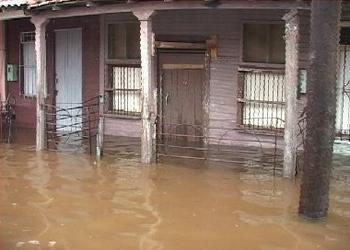
By Osniel Carmona Breijo
HAVANA, Cuba, June 6, 2013 (ENS) – Residents of a port town south of Havana say that their streets are constantly flooded with raw sewage, despite promises by the local authorities to replace damaged pipes.
Surgidero de Batabanó, the main shipping and fishing port on the south coast of Mayabeque province, has to contend with an overflow of hundreds of gallons of contaminated water, which sometimes even runs into houses.
According to one resident, Anaís Cañete, large puddles of sewage containing human feces are a common sight, and the situation becomes critical with the arrival of the rainy season.
“A downpour turns the roads into rivers of filth, preventing people from leaving their homes,” Cañete said, adding, “When there’s coastal flooding, the sea turns the town into a huge septic tank.

“Once – I can’t remember during which cyclone it was – the water supply was contaminated and we had to get supplies from tankers for more than a month.”
She says the root of the problem is lack of maintenance of the sewage system, designed to flow into septic tanks and ditches located outside the town.
Over time, blockages in the pipes have led to continuous leaks. Residents have made numerous official complaints about the problem, which they say dates back more than three decades.
Two years ago, the local council promised to replace the most damaged pipes, but this is yet to happen.
The situation in the port, which forms part of the city of Batabanó, is representative of wider environmental problems affecting Mayabeque province as a whole.
Two years ago, Cuba’s National Statistics Office said state investment in environmental protection in Mayabeque had fallen drastically since 2005. In 2011, the government only invested 113,000 pesos, US$4,520, in water management across the entire province, which has a population of about 380,000.
According to Cañete, it is residents themselves who take responsibility for everyday repairs of the water system. The provincial administration only sends a team of workers round with a tanker to check for blockages and remove sewage in the more extreme cases.
The economy of Surgidero de Batabanó is based on fishing, but there are also agricultural areas, which are sometimes flooded with polluted drainage water.
Antonio Luzardo, a small farmer who mainly produces rice and watercress – both crops that require large amounts of water – said he had lost his entire harvest on more than one occasion.
In periods of heavy rain, waste contaminated with various waterborne pests, bacteria and chemical residues from cleaning products enter the canal irrigation system and spread to his fields.
“Every time it happens, I lose most of my crops, at the very least,” said Luzardo. “Also, the pests and decomposing matter from the drains means I can’t go out and tend to the crops in the field. I tried that once and I got various types of skin allergy. I can’t risk getting sick.”
Locals say that despite the obvious health risks posed by sewage and general flooding, there have been no reports of serious illness, a claim corroborated by a source in the statistics department of the local health centre, who asked to remain anonymous.
“No one has got cholera or dengue fever here,” Cañete said. “Our bodies have adapted to infection. We’re cured. Not even mosquitos want to bite us.”
{This report was first published June 6, 2013 by the Institute for War and Peace Reporting}.
Copyright Environment News Service (ENS) 2013. All rights reserved.
